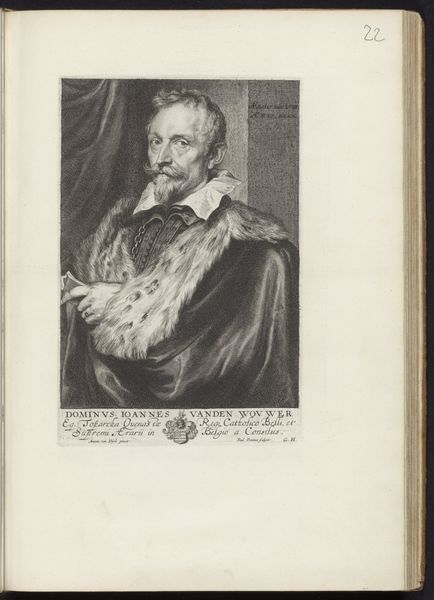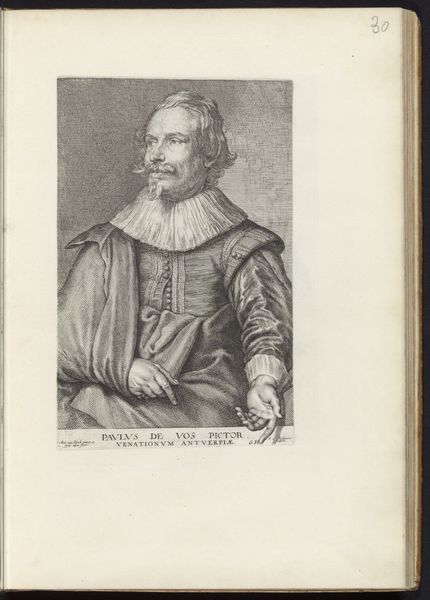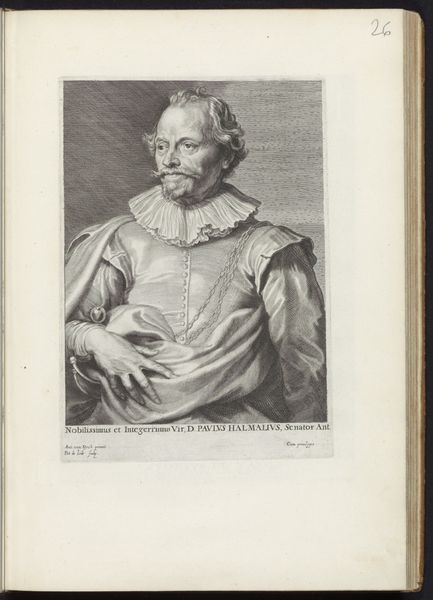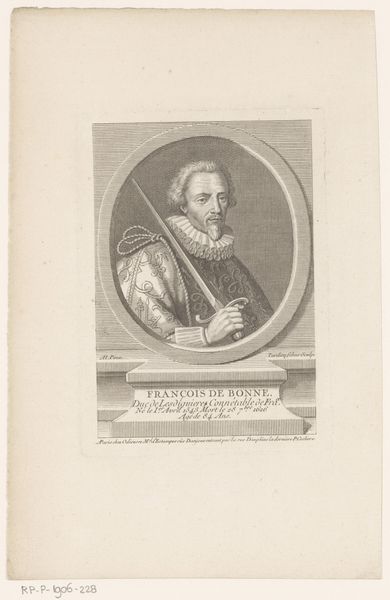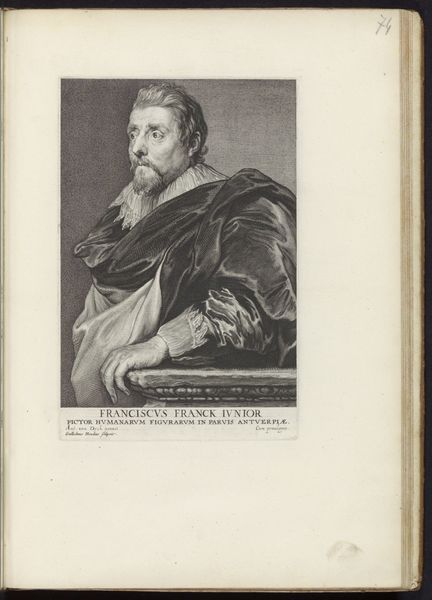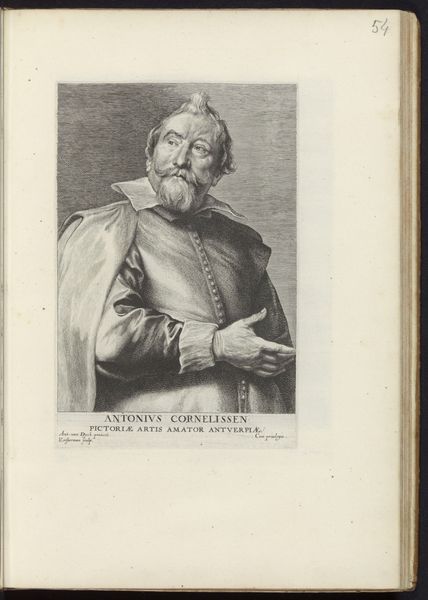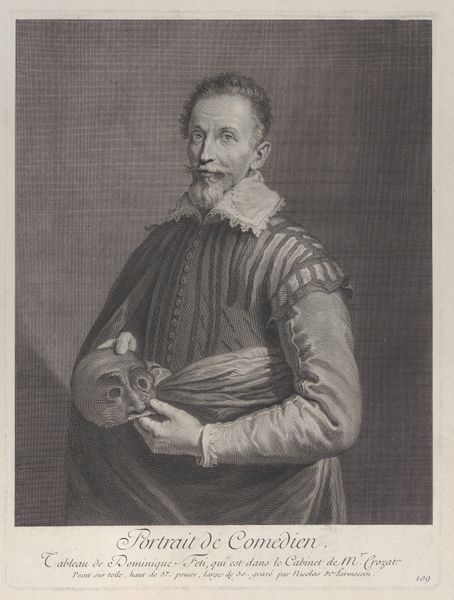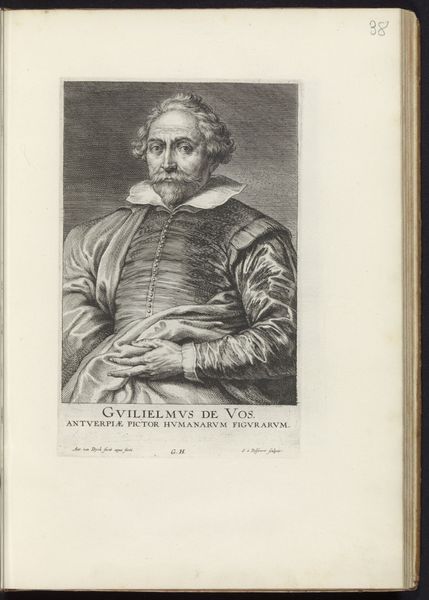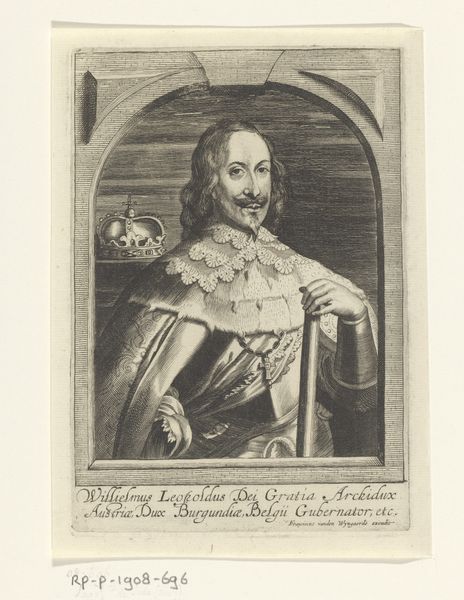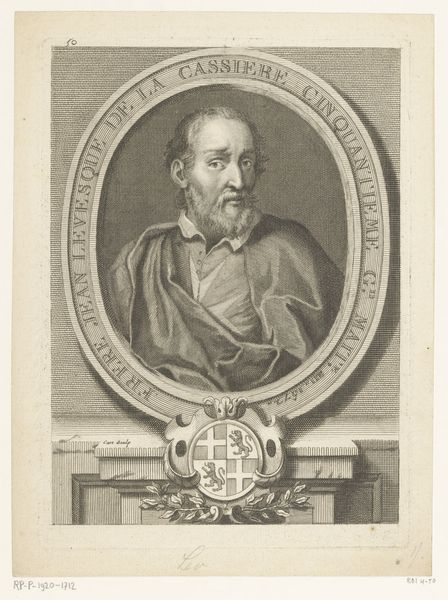
paper, engraving
#
portrait
#
baroque
#
dutch-golden-age
#
old engraving style
#
paper
#
engraving
Dimensions: height 246 mm, width 176 mm
Copyright: Rijks Museum: Open Domain
Editor: This is "Portret van de schilder Theodoor van Loon," an engraving on paper by Paulus Pontius, likely from sometime between 1630 and 1646. It’s quite striking, in an understated way, almost stoic. How do you read this portrait in the context of its time? Curator: The apparent stoicism you perceive is intriguing. It's crucial to understand that during the Dutch Golden Age, portraiture served not merely as a likeness but also as a statement of social standing and individual worth. But consider what isn’t shown: opulence, overt displays of wealth. What does that suggest about van Loon's self-presentation, particularly in the face of the social upheavals and religious conflicts that shaped the era? Editor: So, by downplaying the typical markers of status, is he perhaps making a different kind of statement, maybe about the value of his intellectual or artistic labor? Curator: Precisely. He is a painter portraying another painter. Think about how the limited colour pallete contributes to this reading: engraving lends itself to lines and shape to suggest wealth instead of painting it in living colour. The deliberate use of a more restrained image aligns with certain Protestant values emerging at the time. Is he subverting the dominant narrative by showcasing the dignity of labour? Or by emphasizing internal qualities rather than external possessions? Editor: That’s a fascinating point. It really makes you think about who was included and excluded from these displays of power and how artists of the time negotiated these power dynamics. I hadn’t considered the choice of medium could reflect this cultural discourse, thanks for the enlightenment. Curator: It is about critically reassessing whose stories we amplify through the canon, and who we are socialized to disregard, that makes art a meaningful social artifact.
Comments
No comments
Be the first to comment and join the conversation on the ultimate creative platform.
